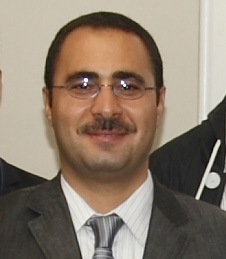Since the 1960s, the oil-producing Arab countries of the Gulf have undergone a period of radical economic and social changes. This is due not only to the increase in income from oil in 1973, but also to the political changes and economic modernization that has arisen in conjunction for the majority of the states of the region.The combined effects of these changes have been characterized in later decades by an unconditioned, hasty and even uncontrolled opening to the external world, and especially to the western way of life, both at the level of consumption modes, urbanization patterns and social relationships. “The adoption of the western pattern in Arab countries stems from the feeling of backwardness and from an aspiration to progress” (Ben Hamouche, 2003, 528). In the Gulf, the intensive presence of a multinational foreigner workforce accentuated the process and influenced the shape and the content of major cities. Although the situation and conditions in all the Gulf Cooperation Council (GCC) countries were similar, the manifestation of the recent developments differs from one to other in rapport with the politic choices and the socioeconomic conditions of every country. As any operation of development is by definition spatial, the various socioeconomic transformations echoed on the space where the greater part of the population lives. These ancient centers were often modest in size, in structures and in functions because of “the lack of water resources, the poor soil, the harsh environment and the limited Modernization and Socio-Economic Changes in the Gulf Arabic Cities opportunities” (El-Arifi, on 1986, 224). In this dry and poor region, the population was often concentrated in oases or near the natural ports in small numbers which the limited resources could bear. Hence, there appeared a multitude of small and dispersed villages. None of these, even the former local capitals, were able to evolve to the rank of a city in its proper term, i.e. with large-scale populations, complex structures, multiple functions and substantial and stable regional authority. However, given recent demographic trends, the expansion of modern economic activities as well as newly created urban functions, the small fishing or pastoral villages have metamorphosed quickly hastily to large urban areas concentrated especially on the coast areas. The accompanying transition impacted on the economic, social, cultural and even psychological definitions in these new emerging urban concentrations with the result that traditional spatial structures were upset in a very short amount of time. In Dubai, the real estate boom oriented to an international market revolutionized the shape, the configuration and the functions of the city. Abu Dhabi “was completely raised then reconstructed and reorganized in the American way with a pure orthogonal plan. It is the only big city of the Arab countries of the Gulf which did not keep its former ancient nucleus witness of the history of the human presence.” (Al Khayat, 1988, 302) In the kingdom of Bahrain, the State “adopted a distributive and comprehensive welfare policy, and became a major and unique actor in shaping the city” (Ben Hamouche, 2003, 1). In the Sultanate of Oman which is distinguished by its relatively numerous indigenous population, limited oil resources, and a socializing real estate policy, the changes have much more moderate. However, even here one can notice the symptoms of the social reconfiguration of the capital urban space. The same phenomena can be noticed in Saudi Arabia, Kuwait and Qatar.
3 DAYS / 12 Workshops
MORE THAN 300 ACADEMIC PAPERS
The socioeconomic changes in the GCC cities are still under-documented and under-researched, and this workshop aims to bring a spotlight to the newly urban reality in connection with the demographic, economic, societal and morphological changes. The historical conditions and the context of modernization and globalization will serve as a background to elucidate the various aspects of the subject. For this purpose, the workshop aims at gathering a multidisciplinary group of scholars and experts. The production of an edited volume in both English and Arabic will constitute the ultimate purpose of this workshop.

